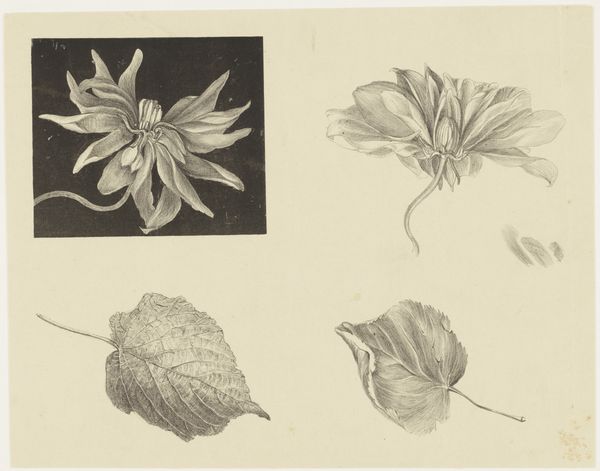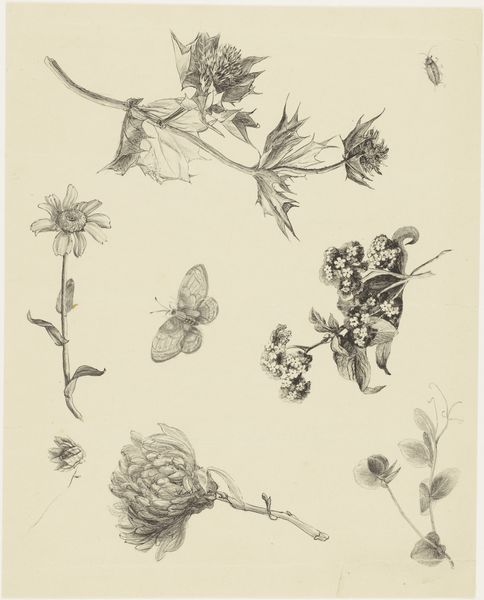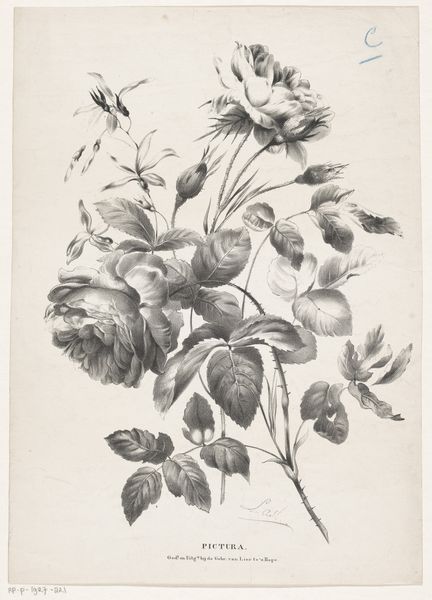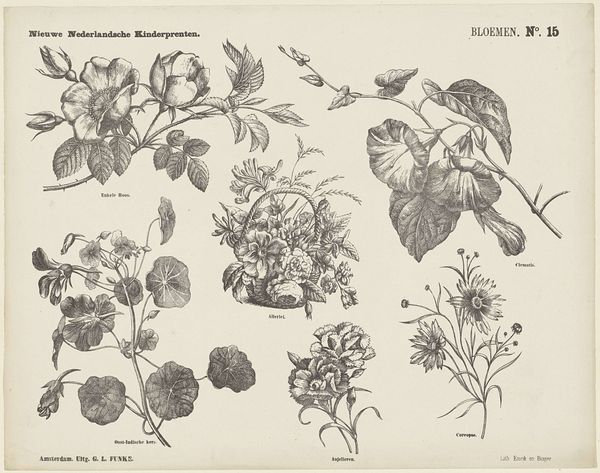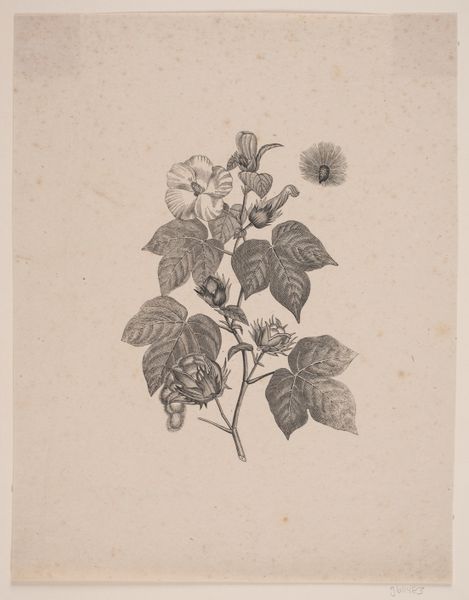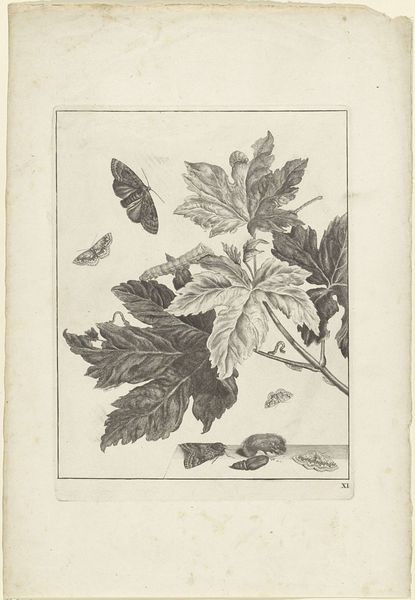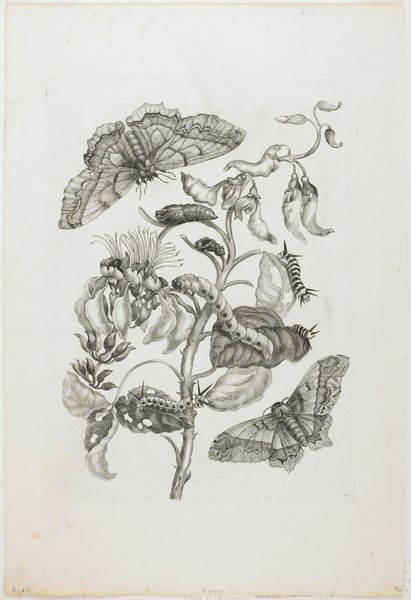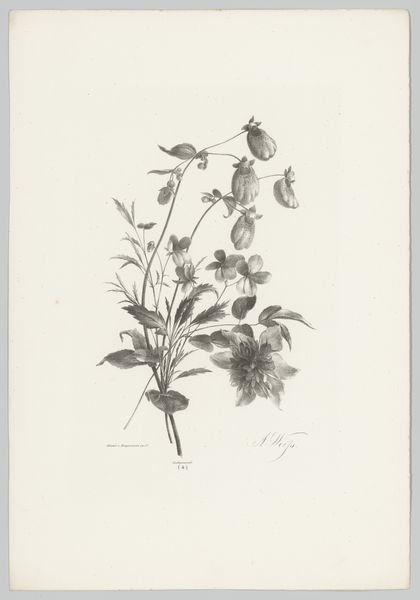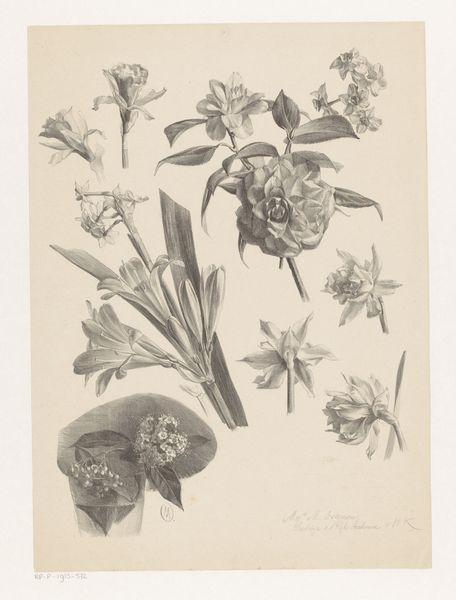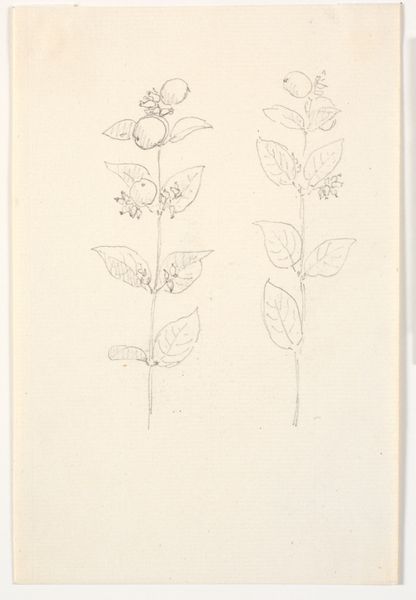
drawing, print, paper, graphite
#
drawing
# print
#
paper
#
graphite
#
realism
Dimensions: height 196 mm, width 75 mm, height 196 mm, width 185 mm, height 196 mm, width 65 mm
Copyright: Rijks Museum: Open Domain
Curator: This graphite drawing from before 1898 by Carl J. Kleingrothe, currently held at the Rijksmuseum, is entitled "Tabaksbladen (links, midden, rechts)" – or "Tobacco Leaves (left, middle, right)". Editor: It has a very somber, almost melancholy feel, doesn't it? The detail is incredible, yet the monochrome palette seems to mute the vitality of the plants. Almost like pressed specimens in an old herbarium. Curator: It's true that the lack of color lends a certain gravity to the image. Realism was prominent then, and Kleingrothe sought accuracy, emphasizing the texture and structure of each tobacco leaf and plant. This approach was valued in botanical illustration as empires cataloged the world for commercial purposes. Editor: Precisely! We can’t ignore the social and economic contexts intertwined with images of tobacco. Tobacco cultivation relied on exploited labor and it was central to systems of global inequality. It's interesting how an image seemingly focused on botanical study subtly reflects the power dynamics of that era. Curator: That's a key point. The meticulous detail also speaks to the plant's economic importance. Tobacco was a valuable commodity; it fueled trade and colonial expansion. These illustrations served practical and propagandistic purposes. Editor: Absolutely, by depicting the plant in this detached, scientific way, it’s distanced from the reality of its impact, essentially masking the human cost of tobacco production, and ultimately obscuring a deeply exploitative labor practice. It’s so easily fetishized here! Curator: I agree. These prints need to be viewed critically, acknowledging the narratives they consciously omit. Thank you, by observing and recognizing this illustration, we have been able to engage, at least to a degree, in these painful socio-economic realities. Editor: Thanks to you, it highlights art's fascinating intersection with power, history, and human experience.
Comments
No comments
Be the first to comment and join the conversation on the ultimate creative platform.
